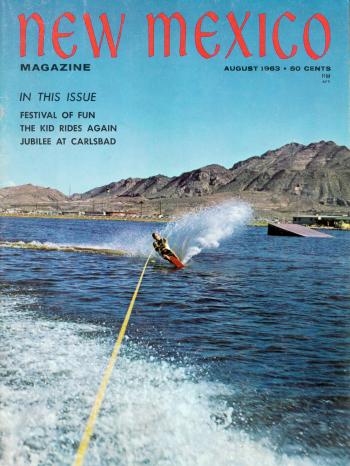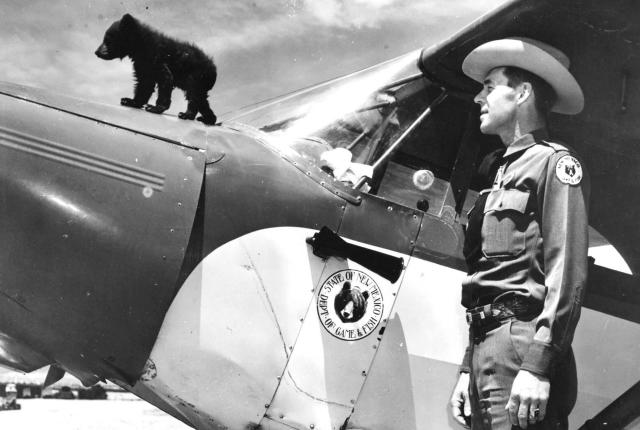MARY LAVIN GREW UP IN THE MIDWEST dreaming of the forests and mountains of the Southwest. She moved to New Mexico after studying forestry and natural resource management, and first worked in timber, recreation, curating, and teaching. Today, after a little more than a year as manager of Smokey Bear Historical Park, in Capitán, Lavin has found her dream job as a walking, talking encyclopedia of Smokey Bear lore and a passionate keeper of his legacy. She has witnessed some surprisingly emotional moments play out at the park’s visitor center, which tells the story of the burned, orphaned cub who survived a human-caused fire in 1950 and became a global symbol of wildfire prevention with his “Only You Can Prevent Forest Fires” campaign. In April 2001, Smokey’s message was officially updated to “Only You Can Prevent Wildfires,” after wildfires became a chronic problem not just in forests, but in grasslands and other areas.

ON THE COVER
June/July 1963
“Canoes have been generally associated with romance, but photographer John Whiteside shows what fun it can be.”
I’M CONSTANTLY AMAZED BY HOW MUCH people love Smokey Bear. We have people who walk in the door and start to cry. They remember the little Smokey Bear they had as a child and become very emotional when they see the historical pictures and read the stories on the exhibits. He was a part of the most successful Ad Council campaign in history, and yet his message and his story is very personal to so many.
Smokey Bear is a local story connected to our state’s history. I’m especially drawn to a series of photographs of Smokey Bear when he was first recovered from the fire. There’s one at Dr. Edwin Smith’s veterinary office in Santa Fe just a day or so after they found him. Smokey Bear is in Judy Bell’s lap. Judy was New Mexico game warden Ray Bell’s four-year-old daughter, and the Bells nursed the cub back to health at their home by feeding him honey, baby food, and milk by hand.
Smokey’s message is more relevant today than ever and will matter for generations to come. The history and science of fire ecology, a warming climate, and forest and watershed health are complex and deserve careful study and response. As we strive to restore health, resilience, and sustainability to New Mexico forests and watersheds, I believe Smokey’s message remains an important reminder for us all. Our individual actions really matter for the greater good, and we each have a chance to directly impact our natural resources through personal responsibility, environmental education, and careful attention when we work and play in our forests, woodlands, and grasslands.
We love to invite people to learn more and share their Smokey stories with us. Wildland firefighters from all over the country come to pay their respects to Smokey, visit his gravesite, and see the New Mexico Wildland Fallen Firefighter Memorial. All of it is very moving.
Read more: This touchstone is inlaid with culture and history.
BEAR NECESSITIES
You can make a difference. Here’s how.
Start young. Kids can take part in the Junior Ranger program, earning souvenirs by participating in an educational activity about fire prevention.
Pay your respects. The life-size bronze New Mexico Wildland Fallen Firefighter Memorial commemorates 38 New Mexico wildland firefighters who have died in the line of duty.
Enjoy Smokey Bear Days. The family-friendly event returns May 3–4, 2024, with a firefighter challenge, vendors, crafts and activities for kids, food, music, art, and conservation stations. nmmag.us/smokey
OUR PUBLIC LANDS ARE ENCHANTING
“New Mexico is simply magical. We are so fortunate to have such a treasure trove of public lands, of which nearly 13.5 million acres are managed by the BLM. Our state provides not only spectacular recreation, but also the ease and accessibility to connect with the rich history of our state. As a native of the Southwest, I feel having such easy access to public lands provides the public with limitless opportunities to experience those connections. It is one of the most amazing parts of life in New Mexico that simply doesn’t exist anywhere else.”
—Al Elser, district manager, U.S. Bureau of Land Management, Farmington District Office




